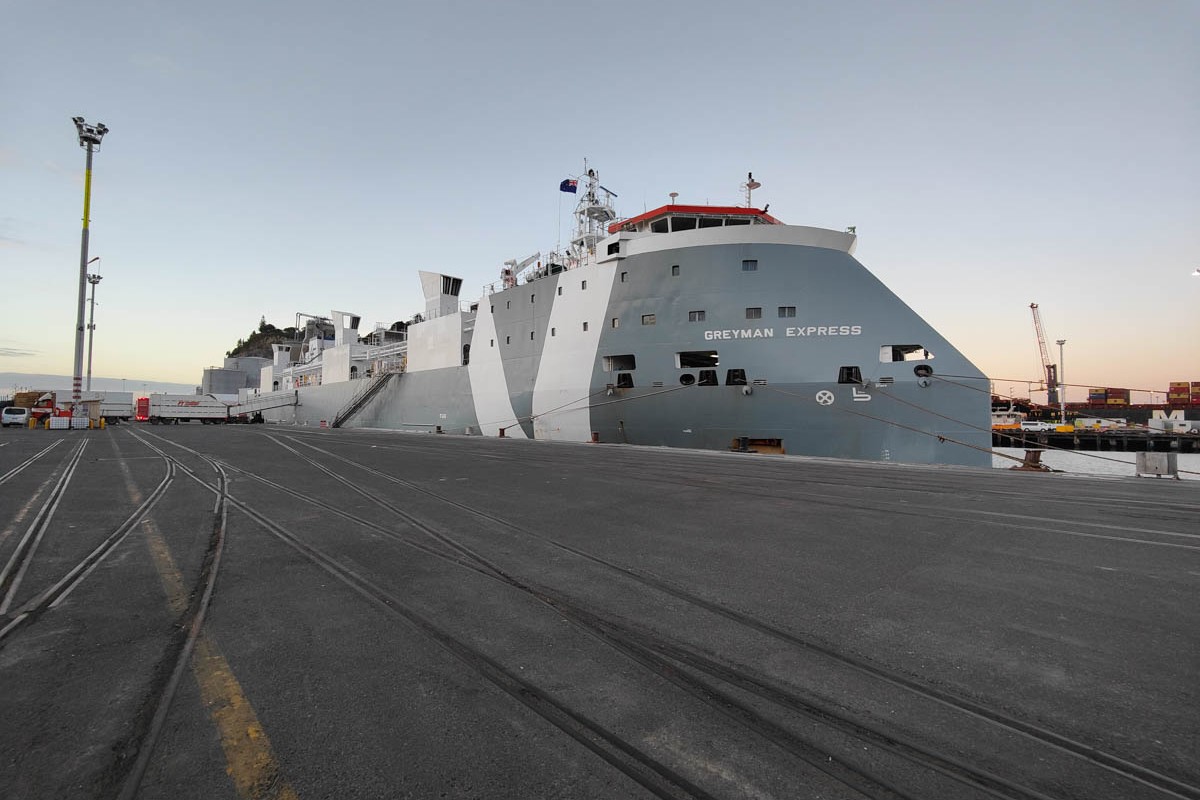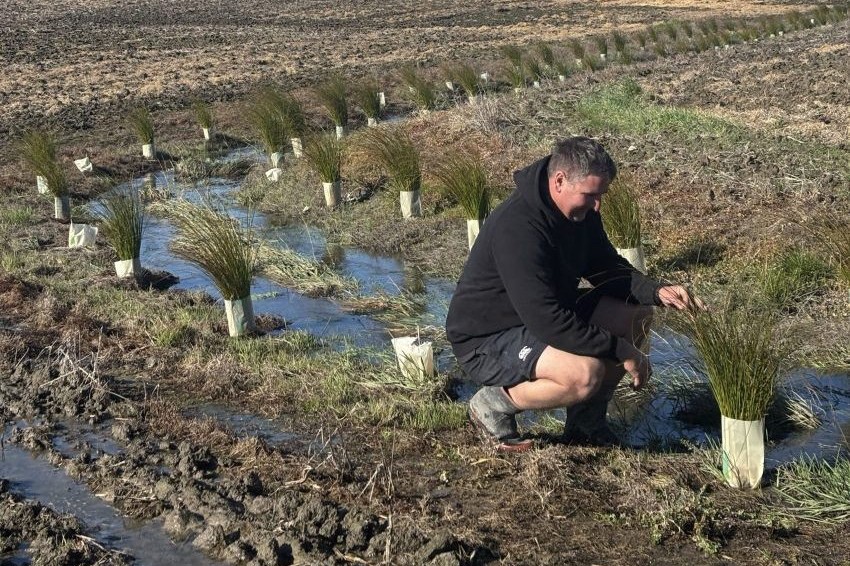Live export ban drags on
Live cattle export has been a contentious issue, banned by the previous government, exporters and farmer suppliers are hoping a new gold standard accreditation can lead to the ban being overturned by August. But time is ticking, as politicians wait for advice from Ministry for Primary Industries officials before making a decision.
Words Tony Leggett

New Zealand’s live cattle export industry hangs in the balance as exporters and farmer suppliers continue to wait for the new Coalition Government to deliver on its promise to revive the trade by overturning a year-long ban on shipments. Brian Pearson, General Manager of export company BeefGen, says the delays are creating considerable concern for the sector.
In spite of good progress on the acceptance and implementation of new regulations controlling the shipping of livestock from New Zealand, he says the decision is a sensitive political call that may take months longer.
He is hopeful that isn’t the case and says the ban has already created huge uncertainty among customers in China and farmers in New Zealand. “We’ve had Chinese customers asking if the reason for the ban is that the New Zealand government doesn’t trust them anymore,” he says. “Our farmers here are also seeking advice on whether the trade will be restarted before they have to make significant decisions on bull choice ahead of mating later this year.”
Pearson says farmers need to be able plan well in advance and the longer a decision on overturning the ban takes, the more difficult it will be for everyone in the trade. “We’re hopeful the ban might be overturned by August this year but that might be optimistic.
“As an industry, we need the change in stronger regulations and new legislation and, rightly so, that does take time to allow for the best outcome for all parties who have a voice at the table.”
Pearson has overseen the expansion of BeefGen’s export business in New Zealand, completing 10 successful export shipments to China totaling more than 40,000 head since it was founded in 2018 through to the ban coming into effect in April 2023.
About 40% of those shipments were beef heifers destined for breeding properties in China and the balance were mostly Holstein Friesian dairy heifers
intended for improving the genetic base and lifting milk production. Cattle were prepared for export in facilities near Taupo and Bulls.
To maintain its ability to supply customers since the NZ ban came into full effect, BeefGen has expanded its business in Australia. Pearson says it was always a logical next step for the company, but the NZ ban has forced the move across the Tasman sooner than expected.
Pearson says he believes the tragic 2020 sinking of the Gulf Livestock 1 with the loss of 41 crew, including two New Zealanders, and about 6000 animals had a big influence on the previous Labour Government’s decision to review the live export industry and ultimately ban exports.
“The sinking of Gulf Livestock 1 was an absolute maritime tragedy. But to ban the trade off the back of that terrible incident is a real shame, especially when so much progress was already being made to lift the standard of care for the animals and the whole shipping process from start to finish,” he says.
Pearson says the live cattle export industry is welcoming a new Gold Standard solution for live cattle exports being developed in collaboration with the Ministry for Primary Industries. “Our company and others involved in the trade out of New Zealand had already begun to adopt most of the requirements towards achieving a new Gold Standard before the ban came into effect.”
The heifers sent in BeefGen’s final shipment to China from New Zealand, just as the transition to a complete ban was fully in place in April 2023, would have achieved the new Gold Standard requirements. This includes shipping on a fit-for-purpose boat, minimum liveweight (200kg), pen density (90% of ship pens used) and the transition time to prepare them for on-board feed pellets (seven days).
“As an industry, I feel we have made huge progress towards ensuring the safe passage of our cattle. As a general manager of a live export business dealing with farmers and buying their animals, I need to be able to look them in the eye and reassure them their stock will be well looked after all the way.”
Pearson visited several farms in China in August last year and says the care provided to NZ cattle is excellent. “When they pay a premium to buy the stock and have them shipped to China, the last thing they would do is not look after them. I was very impressed with the standard of care when I visited several of the farms we’ve supplied.”
Overturning the ban soon would reduce the risk that buyers in China will shop elsewhere and provide NZ farmers with a third, premium option for their stock after either selling them in store condition or finishing them for slaughter and export.
BeefGen and other exporters have typically paid significant premiums above the market prices on offer for the same stock at the sale yards or in the paddock. “Having a strong live export trade operating means farmers have another market for their non-replacement heifers at a premium price.”
The export trade also provides the option for dairy farmers for their surplus bobby calves each year, knowing there is an avenue available for rising yearling heifers for export.
He also points to independent research completed for Livestock Export New Zealand in December 2022 which investigated how New Zealanders felt about the live trade as well as the costs and benefits of the live trade to the country.
It found there is strong confidence among New Zealanders that regulations can ensure accountability by exporters and more (54%) of those in the survey agreed that the live export trade was an important part of the agriculture sector.
In terms of the costs of a ban on the country, the research revealed a $475 million net annual cost in the first few years, dropping to $320m in the long term. For the 1000-3000 farmers involved in supplying the stock for the export trade, the net cost is between $49,000 and $116,000 depending on the year.
Pearson says the research highlights the importance of the trade, providing farmers with a third option especially in tight feed years like many of New Zealand’s beef cattle regions are experiencing now.
What’s in the new Gold Standard?
Pre-departure
- Minimum liveweight and independently verified condition scores
- Enhanced environmental and nutritional management
- Enhanced social and behavioral management
On-board
- Reduced stocking densities
- Specialist training for stockmen and veterinarians
- Increased contingency fodder and provisioning
- Minimum standards for vessel quality
- Improved reporting systems that measure and report on animal welfare onboard
- Behavioural activity measurement and management
At destination
- A two-way training, support and information programme for buyers focused on long-term animal welfare
Accountability
- Exporters licensed to operate by the Ministry for Primary Industries


Perfect storm led to ban on live exports
The tragic sinking in late 2020 of the Gulf Livestock 1 with the loss of 41 crew and close to 6000 New Zealand dairy cattle destined for China, heightened public awareness to the risks of the live export trade. The maritime disaster led then Primary Industries Minister Damien O’Connor to announce a review of the export trade in live cattle in December 2020. The review by the Ministry for Primary Industries (MPI) took many months and considered a range of options, from beefing up regulations covering animal welfare through to a total ban.
After weighing up the report’s recommendations in April 2021, O’Connor went for a total ban phased in over the following two years, saying the risks to New Zealand’s world-leading animal welfare reputation were too great.
At the announcement, O’Connor was emphatic on the risks to New Zealand’s reputation and the contribution of the trade to the country’s primary sector earnings. “In a market where consumers are becoming more and more discerning about ethical and environmental credentials, this Government has moved to ensure that New Zealand’s reputation for ethical trade is not at risk,” he said. “Our farmers are world leaders and we must support them to stay ahead of the curve.
“Our position on the map means that the journey to northern hemisphere markets will always be a long one and this brings unavoidable animal welfare challenges,” O’Connor said.
A defining statistic for O’Connor was that since 2015, live exports by sea have represented only 0.32% of primary sector export revenue. “Whilst we acknowledge the economic benefits for some farmers, we also have to protect the international reputation of our annual $53 billion dollar primary export industry.”
The incoming ban led to a flurry of shipments being prepared and exported ahead of the April 2023 cut-off, boosting the annual contribution of the trade to GDP to nearly $400 million in value.
Live export companies had always claimed their animal welfare requirements were world leading,
but work began on developing a Gold Standard shipping solution as a key component of its fight to reinstate
live exports.
The live exporter group Livestock Export NZ (LENZ) revealed in 2023 it was seeking donations to fund a $1 million campaign, which included funding a lobbying campaign to convince the country the ban should
be over-turned.
Of course, it was an election year and embedded within both coalition agreements that led to the formation of the current Government were identical commitments to “reverse the recent ban on live animal exports, while ensuring the highest standards of animal welfare.”
Support for overturning the ban definitely strengthened with the change of government, but there were caveats to any political talk about removing the ban, particularly regarding the welfare of animals on the ships. Agriculture Minister Todd McClay and Associate Agriculture Minister Andrew Hoggard have repeatedly said the industry must demonstrate more regard for animal welfare before the ban will be overturned. It is Hoggard who has the task of weighing up the situation and making a call on the future of the trade.
Earlier this year, LENZ chairman Mark Willis said he was hoping the ban was over-turned by August, but that would take a speedy transition through Parliament for the new legislation required to overturn the current ban, something questioned by a number of key industry observers. August would suit the live exporters because it would give them time to arrange the purchase and preparation of 2023-born dairy or beef heifers for export later in the year or early 2025.
News that LENZ was mounting such a large and well-funded publicity campaign actually built the hopes of organisations like Save Animals From Exploitation (SAFE), who have been critical of the trade and welcomed the ban.
On March 4 SAFE launched a nationwide petition calling for it to remain in place and announced the petition was headed by the former chair of the National Animal Welfare Advisory Committee, Dr John Hellstrom.
Now retired, Dr Hellstrom is a past Chief Veterinary Officer of the Ministry of Agriculture and Fisheries (now MPI) and was also chair of the Intensive Winter Grazing Taskforce.
He was closely involved in the regulation of the live export trade and his chairmanship of the SAFE petition was seen as a strong signal to the government that an experienced senior veterinarian was opposed to the trade re-starting.
Associate Agriculture Minister Andrew Hoggard was contacted for comment but did not respond by the deadline. However, in a Radio NZ podcast released on April 13, Hoggard said he was still waiting for an agreed Gold Standard animal welfare solution to be approved for live cattle exports by sea before any decision on the future of the trade would be made.
For the country’s live export companies, it feels like a slow boat to China.




